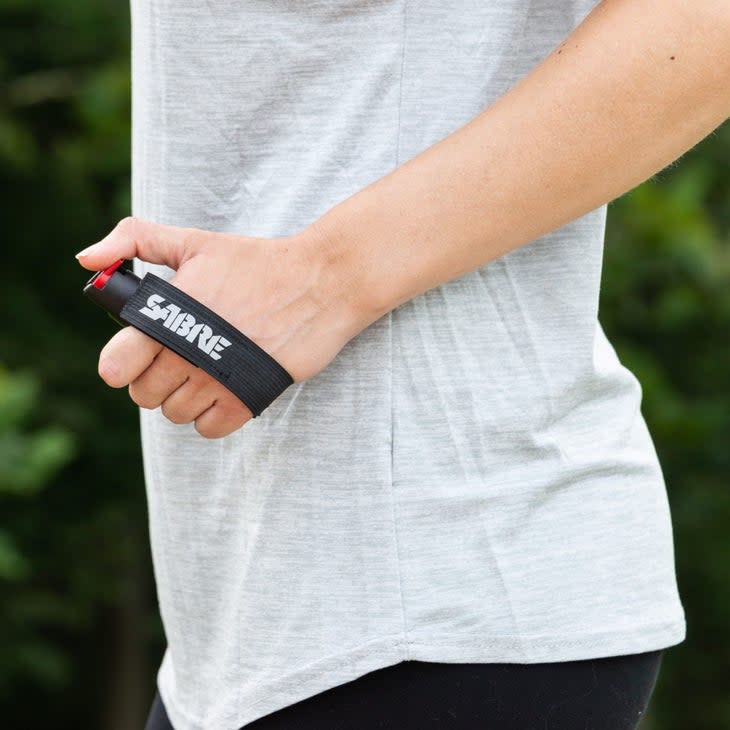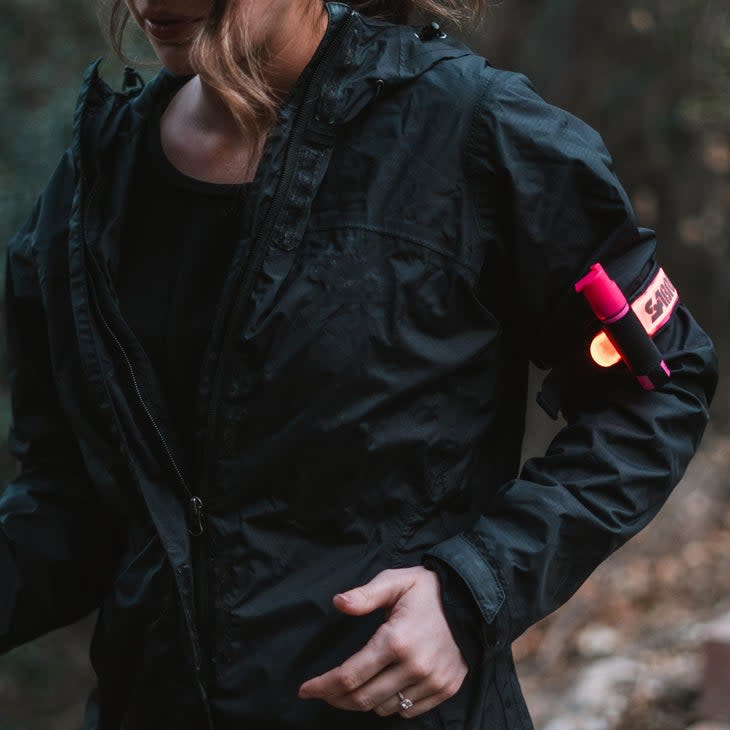8 Ways to Stay Safer Running Alone
This article originally appeared on Outside
When the summer heat creeps to unbearable temperatures, pre-dawn and post-dusk become the most appealing times to run. But one drawback to working out at cooler hours: running in the dark leaves many runners feeling more vulnerable than they do during the day. And even if you catch yourself feeling nervous in broad daylight, you should know you're not alone. Safety concerns are common among solo runners, and particularly poignant for people of color and for women, more than half of whom have experienced some kind of harassment in public spaces.
Fortunately there are ways to plan ahead and keep yourself safe from hazards, including unseen traffic, nocturnal wildlife, tough route-finding, and other people. Here are some strategies for reducing risk and letting yourself focus on the joy of running--no matter what time of day or night you do it.
Share Your Location with Friends Only
Before you head out, let a friend, roommate, or partner know exactly where you're going and for how long. Some tracking apps, like Strava and Find Your Friends, can share your location in real time from your phone or smartwatch. Giving your loved ones a heads-up will both keep them from worrying too soon and let them know to sound the alarm if you're overdue.
That said, it's best to avoid sharing your route on social media or a public running log. Refraining prevents bad actors from knowing where you are and when.

Mix Up Your Running Routes
Even if you're not sharing your runs online, predictability can still make you an easy target. It's best to mix up your routine, just on the off-chance that someone's watching. If you're the kind of person who cringes at the idea of a sporadic schedule, try this: keep a list of your favorite routes for different distances. Then, whether you're planning out your week of runs or deciding the day of, pick a place you didn't go the week or day before.
Run in Busy Places
Some experts recommend running where you know you'll be able to call a bystander to your aid in case of emergency. City or state parks, national parks, and pedestrian-friendly neighborhoods can all be environments where you can put in your earbuds and enjoy some you time without feeling totally isolated.
Know Your Route
It's hard to stay alert to dangers when you're tired and disoriented. So, to avoid getting lost on your long runs, make sure you know your route by heart before you leave the house. Either refresh your memory on your turn-by-turn directions pre-run, or bring your smartphone along for Google Maps and other tools. If you're going somewhere with unreliable cell coverage, download maps from apps like Gaia GPS, AllTrails, or onX so you can use them even without service.

Carry Self-Defense Products
Consider bringing along low-profile personal safety gear, such as an alarm or pepper spray. These tools can boost your sense of safety and give you an extra line of defense in case you do have a threatening human or wildlife encounter. SABRE is one reputable brand with a line of protection just for runners.
Its Runner Pepper Gel, for example, has an adjustable hand strap for carrying on the go, but the canister is also compact enough to tuck into a running vest or belt pocket. SABRE also makes a Clip-On Personal Alarm: buttons activate a loud chirping sound designed to startle any attacker long enough to give you an opportunity to escape, and the device's LED safety light provides increased visibility.
Depending on where you're running, it might also be wise to carry a deterrent for mountain lions or bears. Look for a bear spray canister or horn that comes with a belt holster for easy, hands-free carrying and access at a moment's notice.
Take a Self-Defense Class
Self-defense classes can train you to fend off an attacker through various physical tactics, giving you the tools to handle a worst-case scenario. Many local governments and private business owners offer comprehensive programs, so check for courses in your local area at city recreation centers, martial-arts gyms, police offices, and nonprofits like SASS Go. SABRE is another good resource, offering in-person defense courses through its Personal Safety Academy.

Add Some Bling
According to the CDC, over 100,000 pedestrians get hit by cars each year. Even during the day, wearing bright, high-vis colors like neon yellow or orange--instead of black or gray--can help drivers notice you.
And if you're running at night, make sure your shoes or clothes have at least one reflective element on the front and one on the back. If they don't, consider adding a reflective cuff, vest, or belt or clipping on a small strobe light (available at most running shops). SABRE's Runner Pepper Gel, for example, has a reflective logo to give you a little extra visibility. It can also clip to an LED armband--keeping it handy, visible, and out of the way all at once.
Stay Attentive at All Times
When the running gets hard, sometimes it's easier to zone out to get through it. But the best way to stay safe is to pay attention. Keep your head on a swivel, wear a headlamp when it's dark, and take note of landmarks as you go, especially if you're running in a new area. In addition to keeping an eye out, consider either turning down the volume on your playlist or leaving your earbuds out altogether if you're in a deserted area. That way, you'll be alert to speeding cars, unlit cyclists, other runners, or the warning of a rattlesnake tucked off to the side of the trail.
This tip also includes paying attention to your body as you run. If you start feeling faint or dizzy, head home early. If your weak ankle or knee starts giving out, take a rest. And if you get a funny feeling that someone's watching? Trust your instincts. Keep your pepper gel handy, and consider turning around rather than continuing.
For exclusive access to all of our fitness, gear, adventure, and travel stories, plus discounts on trips, events, and gear, sign up for Outside+ today.

